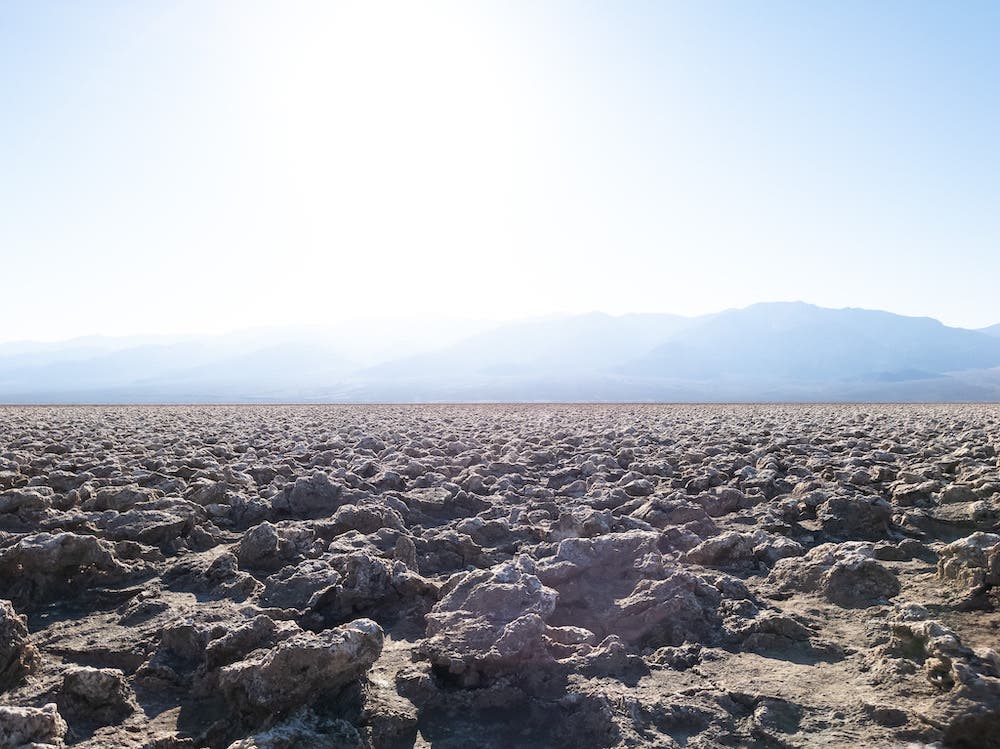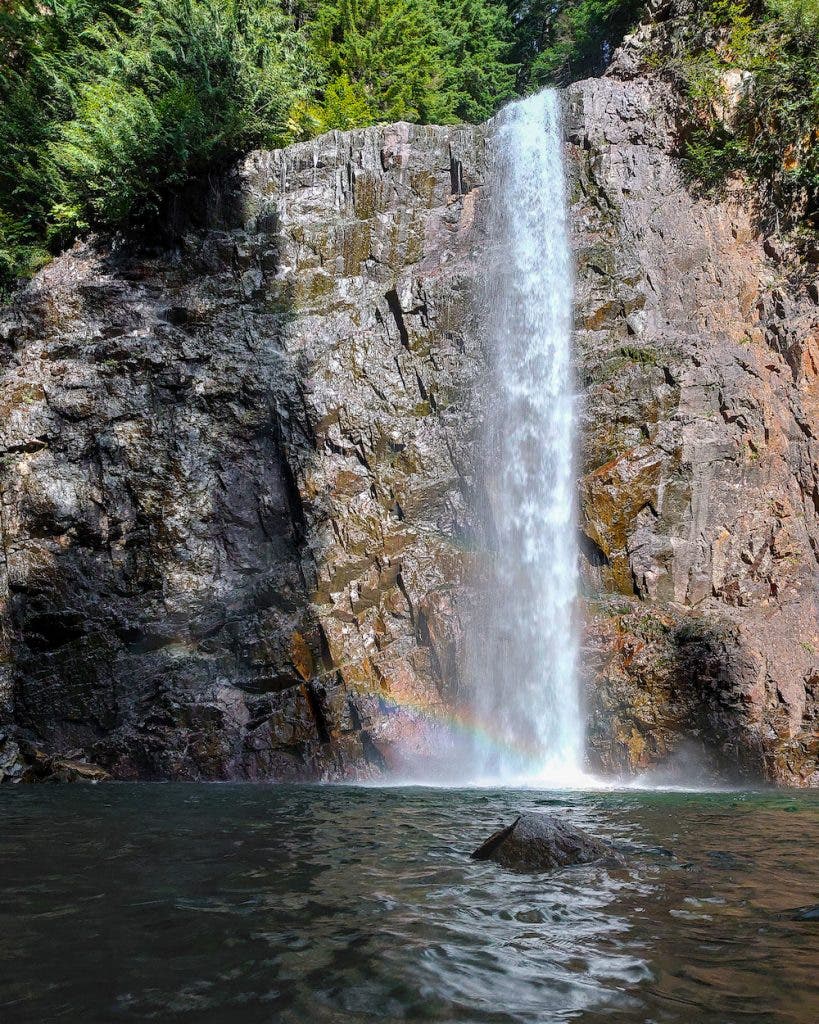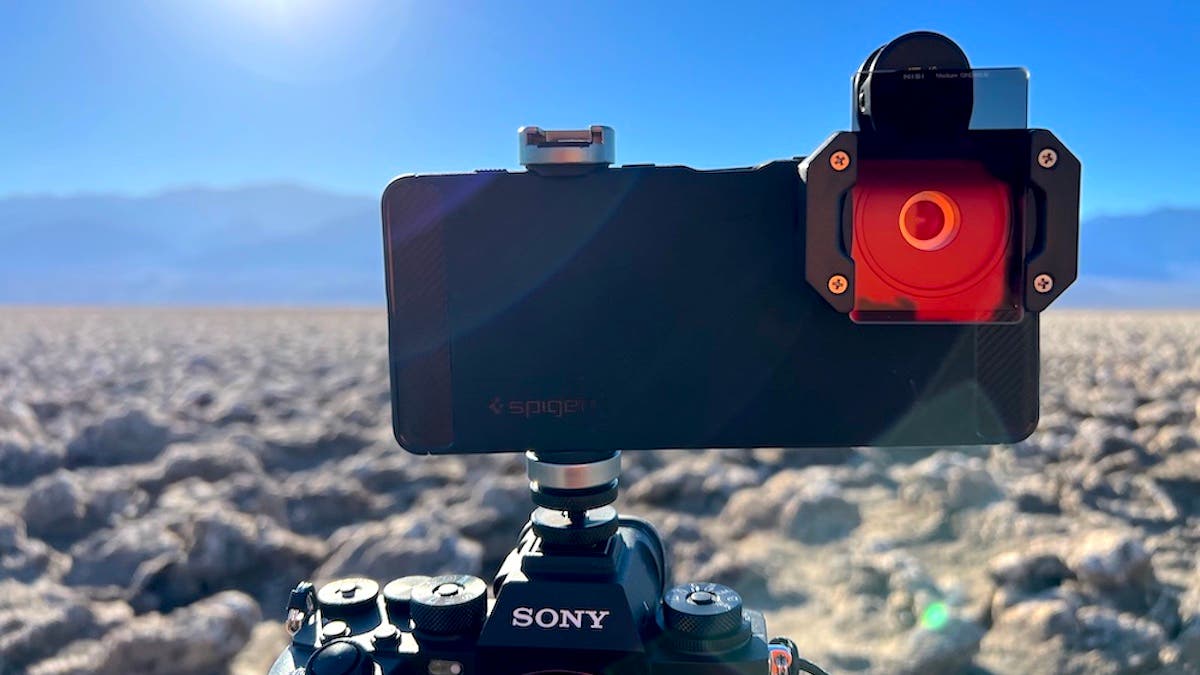One of the major advantages larger cameras have had over smartphone cameras is the ability to use quadrilateral filters, such as polarizers and graduated neutral density filters. Major filter manufacturers simply did not create any — until now. NiSi has recently produced the NiSi P1 Compact Filter Kit for Smartphones.
Smartphone photographers can now have a richer shooting experience through the application of high-quality filters made of professional-grade optical glass. The filter holder is attached to your phone with a compliant but secure spring-loaded clip that is rubber-padded so it won’t scratch your phone. The clip-on system also allows for rapid mounting and can be used on the front-facing or rear cameras. It has a rounded opening to accommodate the camera phone lens. The holder can be independently rotated to allow for precise positioning of graduated filters and circular polarizers. It can also be rotated 360 degrees to change between portrait and landscape orientation.
Key Features of the NiSi P1 Compact Filter
- Filter Holder for the NiSi rotatable P1 System
- Includes filter holder, phone clip, circular polarizer, 3-stop medium grade filter and soft storage bag
- Filters are 40mm wide and 1.5mm thick
- Made of the same optical glass as regular NiSi filters (H-K9L)
- Filter holder rotates independent of the phone clip for optimal grad and polarizer positioning
Build Quality
The build quality of the NiSi P1 compact filter is exceptional. The independently rotating holder is smooth and well dampened. You can quickly and effortlessly make precious movements and the system will stay exactly in position. On no occasion did I notice any drift or unwanted rotation — even with both filter slots occupied.
The clip that attaches the filter holder and filters to the phone is made with high quality plastic. The portion that screws on to the filter holder is metal and inspires a lot of confidence that the threads will endure. The clip spring is stiff but easy to squeeze thanks to the generous thumb and index finger rests. The inner surface of the clip is lined with soft rubber which ensures your phone won’t get scratched and offers an extra amount of grip.
The filters themselves are made of optical quality glass and offers excellent color fidelity. In addition to the polarizer and graduated neutral density filters that came with the kit, I also have the six stop neutral density (ND64 and 1.8) filters. All the filters are of the same excellent quality.
If you’re looking for more ways to adapt your mobile photography, there are also add-on mobile lenses available.

Useability
I used the P1 filter system on three different smart phones with variable success. The three phones were: Sony Xperia 1 Mk III, Sony Xperia Pro I, and the iPhone 13 Pro Max. The limitation of the filter system lies in the clip. If your smart phone cameras are located near the sides or top edge, then the clip system can be maneuvered to place the central opening directly over one of the lenses. This works wonderfully for the Sony Xperia 1 Mk III and iPhone 13 Pro Max — although, this isn’t possible with the Xperia Pro I. I hope NiSi releases or updates the clip to make it slightly larger to accommodate smartphones with cameras located at the center rather than the edges of the body.
Having a phone case on your phone can help but sometimes hinder the overall usability of the filter system. If you use a case, make sure the opening for the camera is flush with the camera bumps. On the iPhone, the addition of a thin case negated the gap between the camera bump and the back of the phone. This allowed flat surface for the clip to attach securely and avoided gaps between the holder and the camera.
Once the clip is secured to the camera, it is simple to screw on the filter holder. The holder has two slots for filters. The glass filters slide is smoothly and are secured in place with the rubber edges of the slots. They offer a nice grip, but filters can be moved up and down with extreme precision. This is very important because the smartphone lenses are very small and only minor movements are required to position gradient filters at preciously the desired location.
Polarizer
The polarizer is supplied in a rectangular format to fit in to the holders. Placing it vertically through the slot applies the maximum amount of polarization. You can then turn the filter adapter to adjust the desired effect. Remember the filter adapter rotates independent of the clip, so there is no issue whatsoever in rotating your system. While I do appreciate the ability to use a polarizer, having to rotate the entire system is cumbersome. For example, if I want to use the polarizer with a graduated neutral density filter, there is no way to rotate just the polarizer. Since both filters need to be rotated together, the graduated neutral density filter would be misaligned. However, this is not a problem if you want to pair the polarizer with a pure neutral density filter.
Graduated Neutral Density Filter
In the kit, NiSi includes a 3-stop medium grade graduated neutral density filter. It is darkest at the top and gradually becomes clear towards the middle of the filter. It is used ideally for scenes where the sky is much brighter than the foreground. This will minimize the exposure differences between the top and bottom portions of the landscape and lower the overall dynamic range of the scene. Smartphone sensors are tiny compared to sensors on larger cameras and already have limited ability to capture a wide breadth of exposure variation (dynamic range). Using a graduated neutral density filter can help mitigate that problem.
NiSi’s graduated ND filter for the smartphone is made of very high-quality material. There were absolutely no color shifts. It did an excellent job of taming the bright skies during my trip to Death Valley National Park.
Without Filter

With Filter

Neutral Density Filter
In addition to the filters included in the kit, I also got the 6 stop ND filter. It provides a 6-stop exposure reduction allowing you to photograph with a slower shutter speed than normally required. By slowing your exposure time, you can show movement in your images — for example, water flow and cloud motion.
Like the other NiSi filters, this one is made from high-quality optical glass (not resin) with nano coating to prevent loss of detail. I also did not notice any coloration of my images when using this filter.
Without Filter

With Filter

Image Quality
I have absolutely no complaints about the image quality when using the NiSi filters. The colors stay neutral, and the details remain sharp. There’s also no appreciable loss in contrast or saturation. I can now capture the same type of smooth waterfalls and well exposed sunset shots with my smartphone that I did with my larger camera systems. When directly comparing the sharpness, color accuracy, and contrast between filtered and unfiltered images, I noticed no difference.
Conclusion
NiSi’s P1 filter system for smartphones is an excellent accessory for mobile photographers. The available kit offers a nice selection of filters to get you started. The overall package is quite small and portable, which also means individual filters are a bit less expensive than their counterparts for larger format cameras. The build quality of the system is robust, and the optical quality of the glass filters is excellent. If you have a smartphone and you want to elevate your photography skills, I highly recommend the NiSi P1 Compact Filter Kit for Smartphones.
Check out the 42West article, How to Improve Your iPhone Photography, for more tips and tricks.






